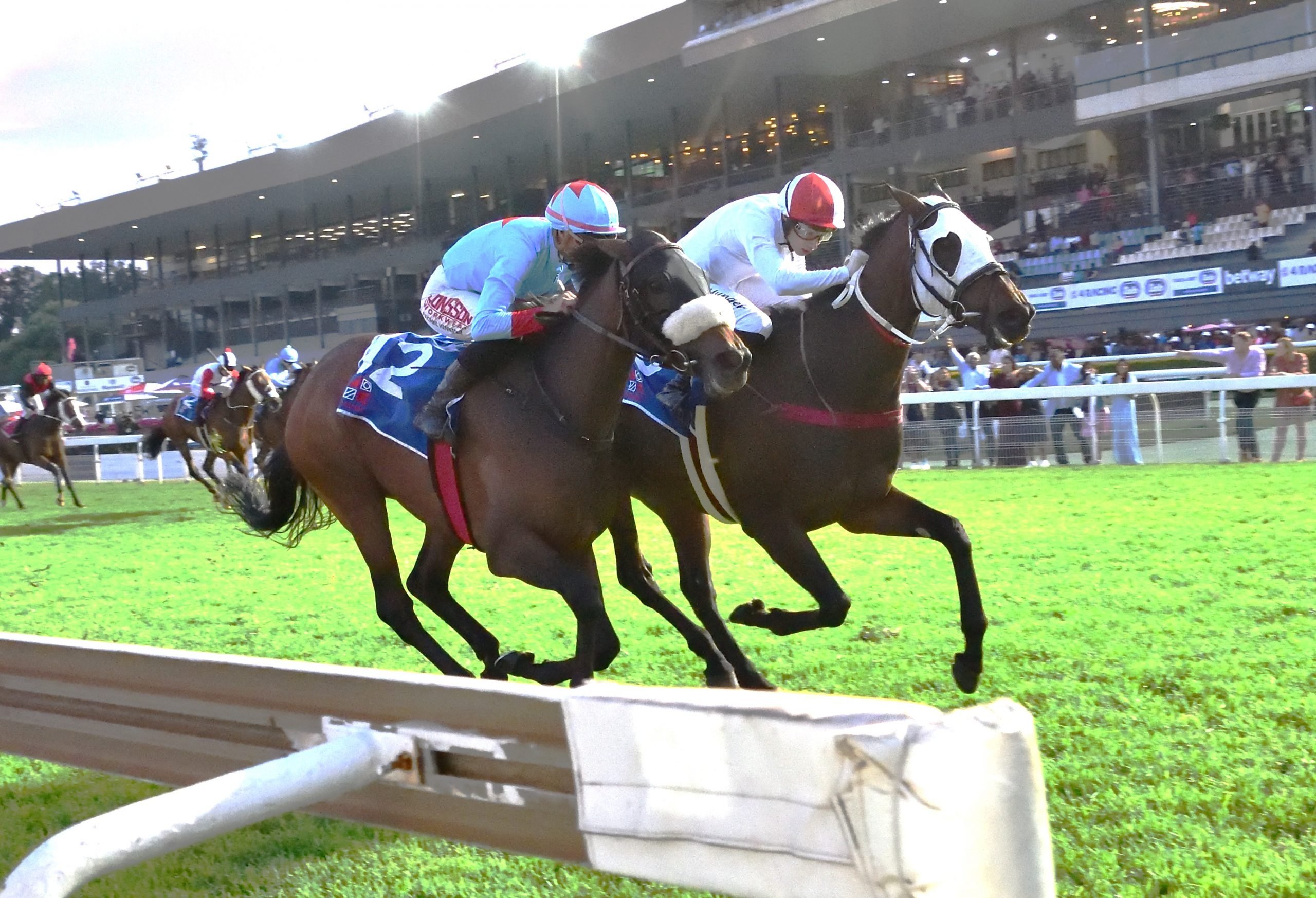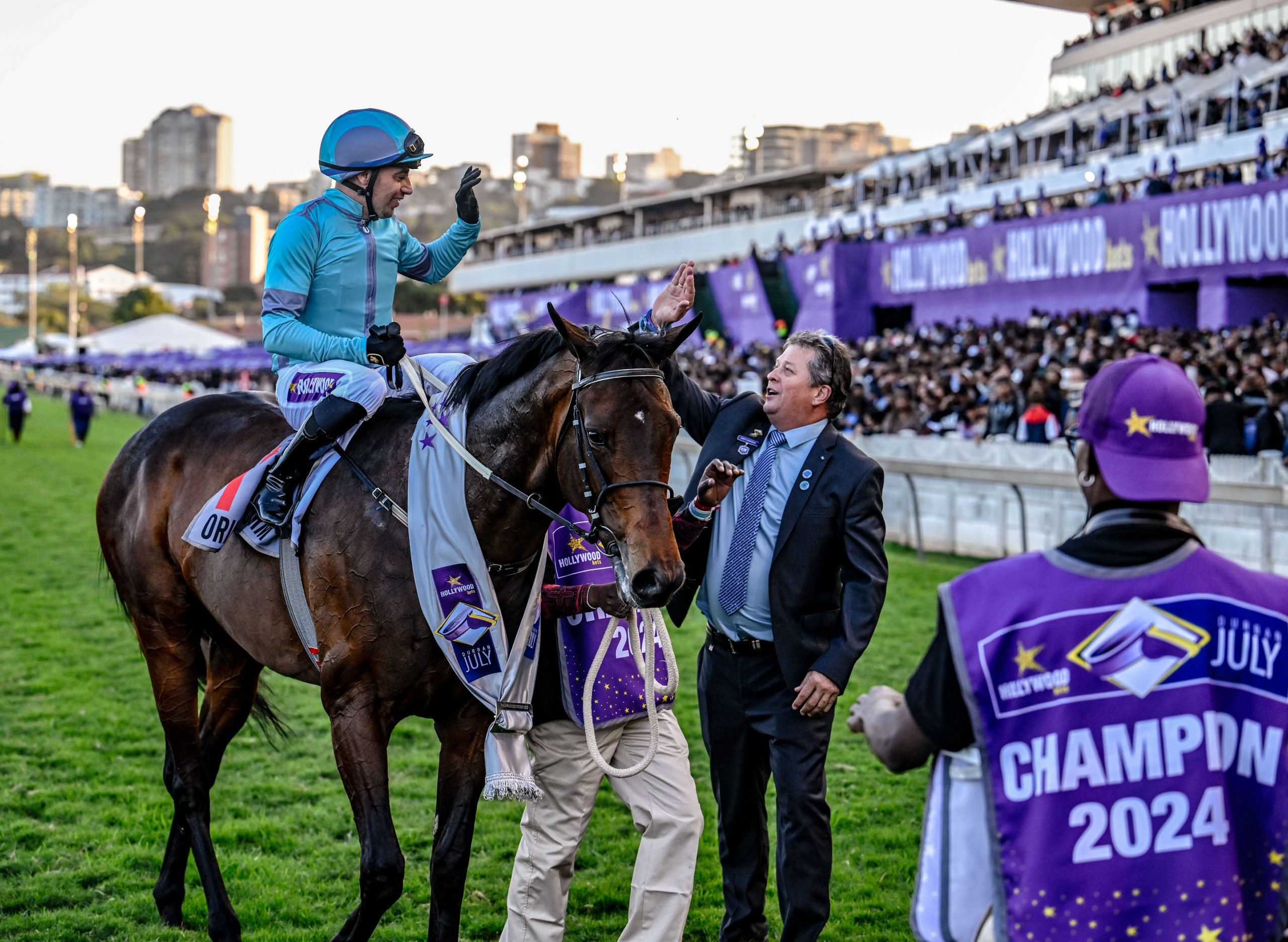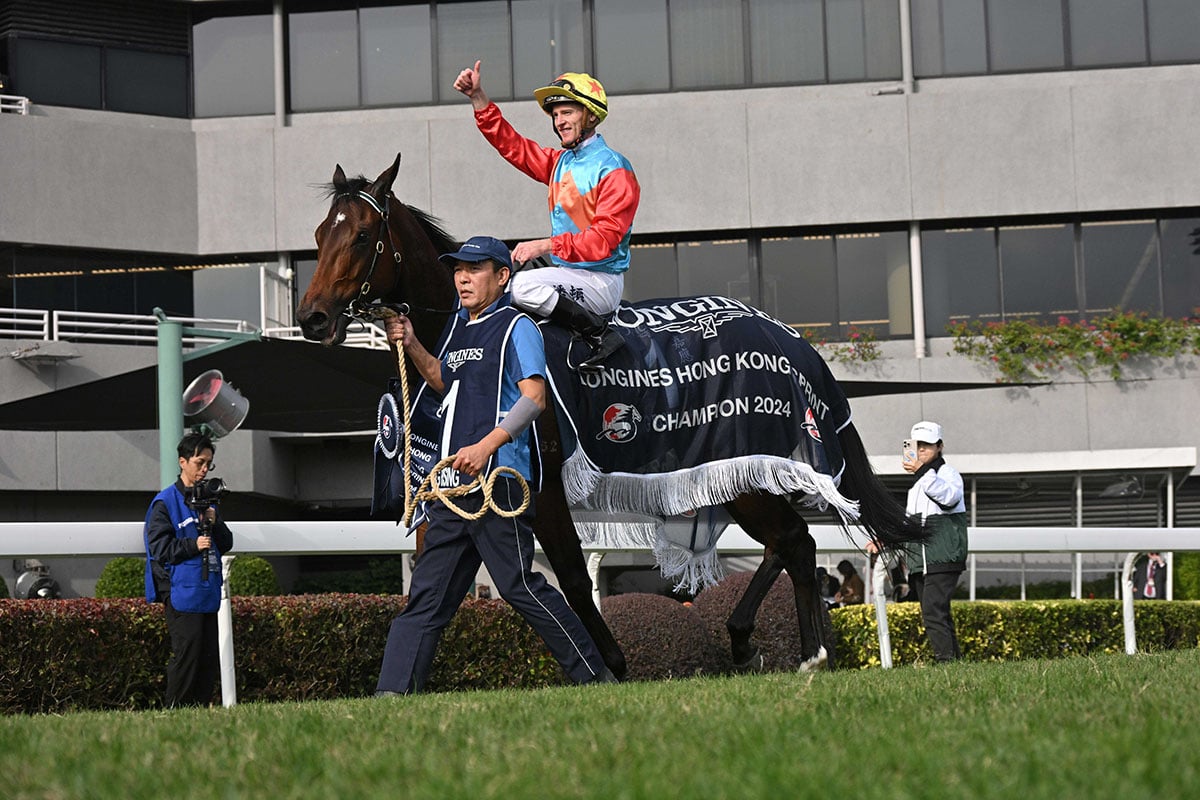It is time for the industry and the National Horseracing Authority to acknowledge that the process in producing ratings in South Africa is faulty, more so than the theoretical discipline of merit-ratings which is often the argument against it.
Jay August writes in the Sporting Post Mailbag that having reviewed this past weekend’s merit rating changes he finds himself in a position where it is becoming impossible to justify the Merit Rating process from an allegation that it has become a giant calculator devoid of logic or introspection.

The ratings awarded after the Daily News 2000 are evidence of this.
All the failings of merit handicapping in South Africa are evident in the manner in which this race has been assessed. That I would have rated the race and the winner a mere four points higher may at first seem trivial, but those four points may as well be a great chasm over which the handicappers cannot leap.
Below this letter is a detailed analysis of that race and its ratings – see addendum.
In handicapping small errors are accretive over time and those errors repeated many times lead towards a self-destructive path which eventually requires remediation lest it render the entire process unworkable. The only remedial steps that have ever been attempted in South Africa are blanket increases in ratings.
Blanket increases are a blunt instrument which gloss over the underlying structural problems in handicapping and do nothing to fix the long-term damage wrought by the initial error.
To use a monetary analogy, the only purpose they serve is to inflate away a permanent problem for a brief moment, soon requiring more inflation until that tool itself is no longer viable.
Handicappers in South Africa are required to release their ratings for the preceding race day within 24 hours and for the preceding weekend on the Monday.
In addition to their tasks as handicappers they also frame weights at first entry and either do eliminations or aid in the process of eliminations. Mondays for handicappers are a period of great pressure. With great pressure comes potential error. That potential error will be most evident in the races that most count, the weekends pattern races.

By contrast in the UK rating updates are released once a week on a Tuesday.
In Australia ratings are released after 48 hours and for the weekend pattern races on the Tuesday following the weekend.
Handicappers in these countries do not frame weights or participate in the process of eliminations as intimately as they do in South Africa. The handicapping teams there are also backed up by data analysts, in-house in the BHA’s case and outsourced in the case of Australia.
In SA we have come to believe, wrongly in my view, that the critical thinking required in applying one’s mind to the rating of horses can all be done by a team of two senior and one junior handicapper, whilst simultaneously framing weights, eliminating fields and fending calls from trainers eager to understand their potential rating increases.
For a weekend crammed with pattern races, as has just passed, we expect all of this to occur within the confines of working hours on a Monday.
Our handicappers have neither the time for introspection nor the time to critically think about their discipline.
Instead they stumble from one daily deadline to another, working within an industry strapped for funds and requiring them to serve in multiple roles.
The checks and balances which catch potential errors in other countries do not exist.
Is it any wonder therefore that we find ourselves constantly in time consuming and unnecessary debates about ratings? Does the industry have time for these continual and never-ending battles over ratings?
It is time for the industry and the NHA to acknowledge that the process in producing ratings in South Africa is faulty, more so than the theoretical discipline of merit-ratings which is often the argument against it.
 Being stoic and stubbornly defending this status quo will only drive a deeper stake into the heart of merit handicapping and cause more unhappiness and instability. Tinkering away at sub-optimal solutions which avoid fixing the process will serve only to create greater problems later.
Being stoic and stubbornly defending this status quo will only drive a deeper stake into the heart of merit handicapping and cause more unhappiness and instability. Tinkering away at sub-optimal solutions which avoid fixing the process will serve only to create greater problems later.
Changing the deck chairs with new personnel will have no effect other than to appear for a short while as a solution. The faulty process is at the heart of the matter. It has always been so.
Various people at the NHA have come and gone in the twenty years the merit system has operated with much the same result from one year to another.
We cannot keep up this random walk down the rating path which takes us ever further away from reality and ever closer to insanity.
Either the merit rating system must be fixed and that means more time for deliberation and more checks and balances, or we must concede that the industry cannot afford such a costly process, and we must then find a cheaper, easier and more elegant solution.
Fundamental change has to be made, change that will stand the test of time. Patching the existing process will not resolve anything.

Addendum
Discussion of the ratings of the Daily News 2000.
Last December Wild Coast ran in the Cape Guineas off a mark of 96.
He ran fourth in that race almost 4 lengths adrift of the now exported Kilindini. The latter was assessed to have run to a rating of 122.
The fifth horse that day Eden Roc was believed to have run to his rating of 114 and was therefore considered the line. By simple arithmetic, the case was made for a rating increase for Wild Coast from 96 to 114.
Such a large rating increase was a leap of faith about the progress of the classic crop at that point, one which I found aggressive, but one which could be considered only a difference of opinion as to that progress.
Having taken that leap the handicappers had (apparently) played their hand as to how they would rate classic races in future.
One therefore would have expected consistency to be applied in the remaining Classic races. The line in the sand had been drawn. Unfortunately, from there the discipline and landscape has become messy and incoherent. There are some reasons which mitigate in favour of the handicappers lacking consistency subsequently and they include:
1 – Kilindini has subsequently been exported and was unable to prove or disprove his rating, a rating which now stands as the best rating awarded to a three-year-old in South Africa in 2019/20
2 – Viva Rio the second in the Cape Guineas ran once more winning a Progress Plate and has not been since.
3 – Macthief third in the Cape Guineas has not been seen since.
4 – Got The Greenlight, the highest rated two-year-old, was targeted at a sales race early in the season and therefore missed the formative part of the season and is only now coming to the fore as the dominant male three-year-old.
5 – Shango having impressively won the Dingaan’s in a fast race, has not gone on from there.
6 – The top horses in the current crop do not exhibit the dominance that last year’s crop did, and they have not progressed in a similar manner. Although Summer Pudding has won seven in a row, and has been marvellously consistent, she has consistently beaten more or less the same horses by the same margin.
7 – The two-year-old crop from 2018/19 was not incorporated into the general population at the full 10 point increment made in August 2019, only 5 points, and so as a group their relativity to previous crops and the older population was broken. Not raising the juveniles by the full 10 points which would have been consistent with prior years set the current year’s sophomore ratings for catch-up relative to the older population.
Despite all this, Wild Coast has provided enough evidence and a collateral line from the Cape Guineas in subsequent months. While disappointing in the CTS 1600, he next time out won the KZN Guineas beating Padre Pio and Golden Ducat.
The handicappers were conservative in their assessment of this last race as the field was coming back from lock-down and the form was rightly treated with some suspicion. The same three were a much fitter and more reliable measure of their ability in the Daily News 2000.
Got The Greenlight confirmed his status as the best male three-year-old currently running in SA by winning this race, while Golden Ducat and Padre Pio appeared to step up from their Guineas form although not good enough to beat the winner.
Wild Coast in fifth beaten almost 5 lengths by the winner appeared not to have made any further progression from either his Cape or KZN Guineas form. Shango likewise seemingly made no progress in fourth.
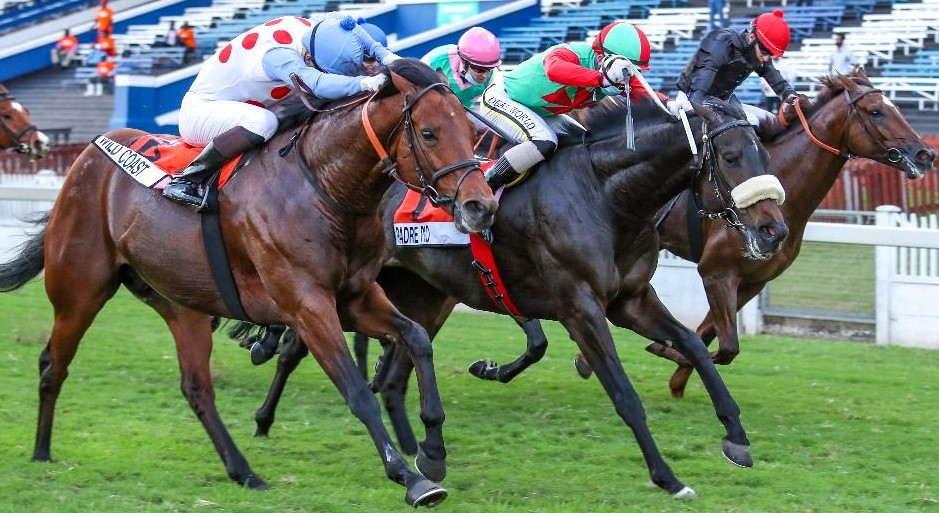
Wild Coast – the right Daily News line horse? (Pic – Candiese Lenferna)
Wild Coast appears, therefore, as a solid horse to use as a line in the DN2000.
He has run fourth in his only other Grade 1 classic beaten by a similar margin. He has subsequently won a Grade 2 classic and has now run fifth again in a Grade 1 classic.
His form approaches something of a reliable line to be used in assessing the likely improvement in the Grade 1 DN2000 field.
He has also for the first time in a Grade 1 race faced the two top rated Highveld colts and his displacement from fourth in his other Grade 1 appearance to fifth here does not imply regression but rather increased competition.
In any case, three-year-olds consistently improve in this race and competitors in the D2000 have a solid record of subsequent performance in the same year’s “July”.
There is therefore no reason to be conservative or timid when assessing the likely improvement in the DN2000.
It is after all a Grade 1 race and is patterned to assess the likely improvement in the classic crop. It is also the last Classic Grade 1 race and should in theory provide the seasons best rating/s.
So, which Wild Coast ran on Sunday? Was it the horse who ran fourth in the Cape Guineas and who was rated at 114, or was it the horse who won the KZN Guineas and was rated 110? Or is it the horse who is currently rated 112? Either way Got The Greenlight’s win can be assessed against Wild Coast at anywhere from 120 to 124, while 122 would provide the mid-point and assume that Wild Coast has run to his current mark.
The handicappers, however, would have us believe that none of this happened. Rather they would have us believe that Wild Coast regressed in this race and ran to 108, some 6 points lower than his fourth in the Cape Guineas and 2 points lower than the KZN Guineas.
No reason has been advanced by them why this may be so, and we must therefore conclude that arithmetic played its role. Why then after taking the leap of faith on the progress of the classic crop and Wild Coast in the Cape Guineas, have they now flipped to the other extreme, by being overly conservative and pessimistic in the DN2000?
Was the winning performance in the Cape Guineas really 4 points better than the DN2000? If timidity or conservativeness were rational then surely the correct course of action would have been to be conservative in the Cape Guineas and to take a leap of faith about progression in the DN2000.
To add further salt into this wound allow me to reproduce the MR race ratings for the DN2000 for the previous three seasons:
- 2019
1st – Hawwaam = Race Rating (RR) of 130 – all ratings adjusted for the plus 10
2nd – Twist of Fate = RR of 127
3rd – Copoeira = RR of 115
4th – Zillzaal = RR of 114
5th – Thanksgiving = RR of 111
Highest RR achieved by any horse in the season = Do It Again (136 = July)
Winners performance relative to the best of the season = minus 6
Fifth horse to best RR of season = minus 25
- 2018
1st – Surcharge = RR of 122 – all ratings adjusted for the plus 10
2nd – Majestic Mambo = RR of 120
3rd – Tap O’Noth = RR of 120
4th – Do It Again = RR of 119
5th – White River = RR of 118
Highest RR achieved by any horse in the season = Legal Eagle (136 = Green Point)
Winners performance relative to the best of the season = minus 14
Fifth horse to best RR of season = minus 18
- 2017
1st – Edict of Nantes = RR of 123 – all ratings adjusted for the plus 10
2nd – Al Sahem = RR of 122
3rd – Horizon = RR of 116
4th – Glider Pilot = RR of 114
5th – Copper Force = RR of 112
Highest RR achieved by any horse in the season = Whisky Baron (136 = Green Point)
Winners performance relative to the best of the season = minus 13
Fifth horse to best RR of season = minus 24
The best MR race performance this season was achieved by One World in the Sun Met – 135. The winner of the DN2000 is adjudged to have run 17 points lower than that performance while Wild Coast in fifth has been adjudged to have run 27 points lower than that rating.
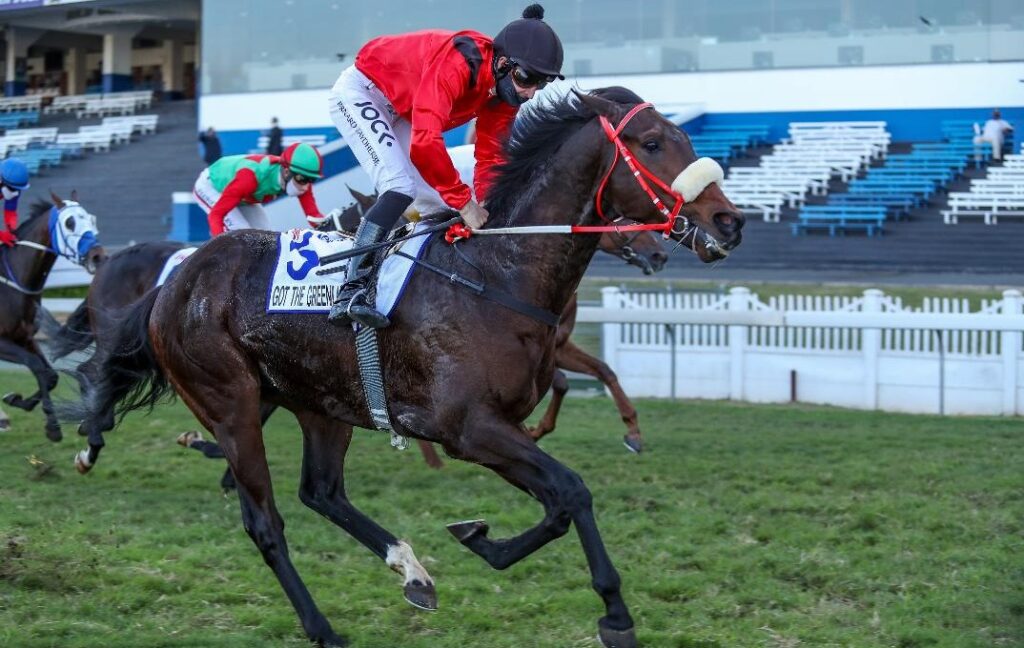
The 2020 Daily News – worst of last four? (Pic – Candiese Lenferna)
By comparison, therefore, this year’s DN2000 is adjudged as the worst running of the last four races. The winner is regarded as the worst winner of the last four. Is that reasonable?
It requires a struggle to agree that Got The Greenlight is at this stage of his career 5 points worse than Edict of Nantes or 4 points worse than Surcharge but that is what we are being told by these ratings.
Perhaps the handicappers have been guilty of ignoring the need to make good the 5 point disparity introduced on 1 August, but having shown a desire to do just that in the Cape Guineas it is not entirely obvious what the current race rating suggests other than an overly simplistic and conservative reduction of the race.
To conclude, I have now wasted well over an hour of my life writing this and on reviewing its contents I come to an unhappy conclusion that Merit Ratings in SA are too complex a subject to be distilled down to a Monday morning discussion and press release. I have not even touched on any other ratings.
The process and subsequent ratings are confusing for the racing public and the punter. The ensuing debates in public and private regarding ratings are the cause for much unhappiness in the industry. These endless debates are counterproductive.






